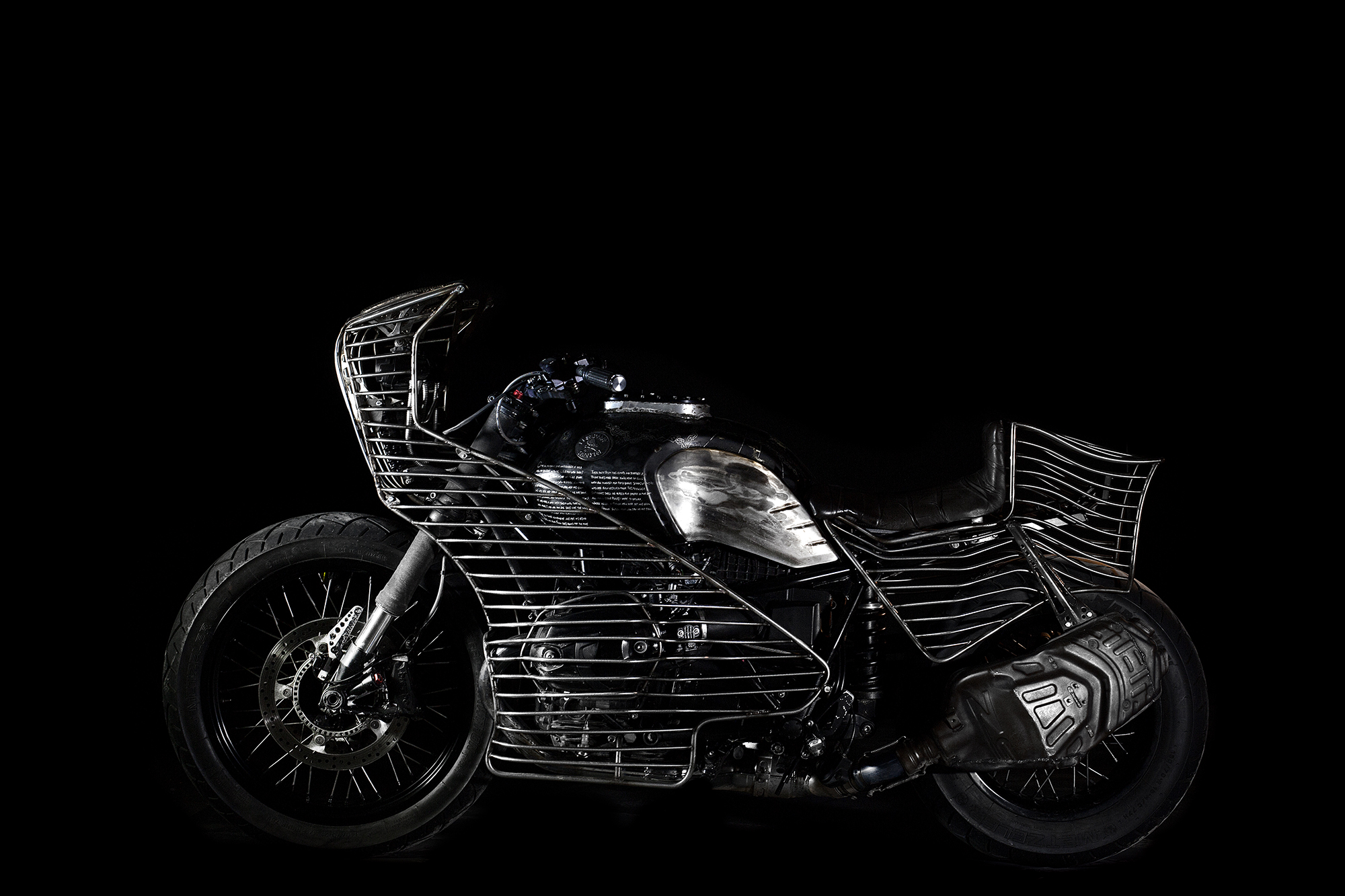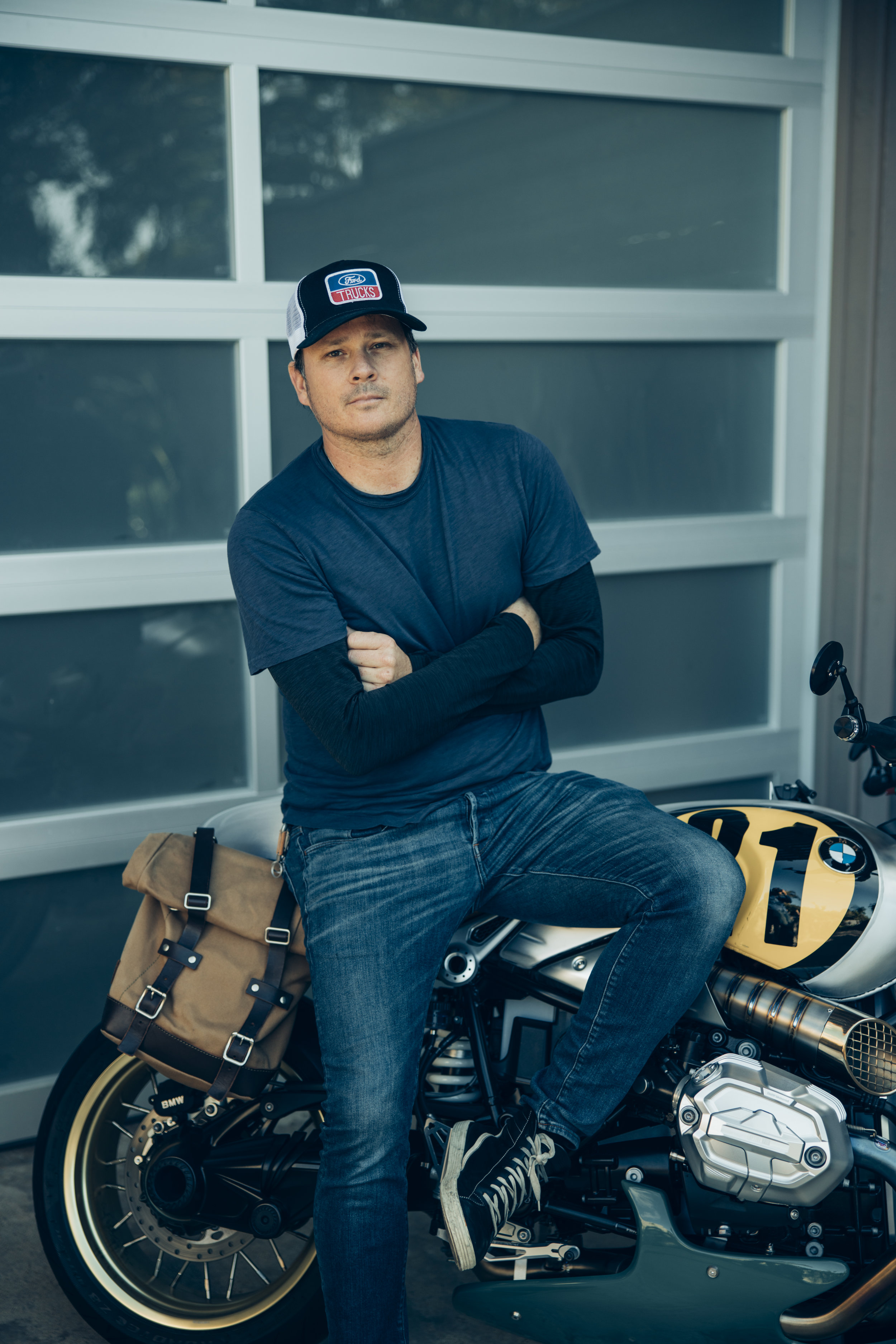Motorized Creativity
Words by David Borras | Photos courtesy El solitario
El Solitario is not a company; It's a way of life.
From the depths of the Galician forests, El Solitario has been challenging the status quo since its birth in 2010. We are best known for our wild and unadulterated storytelling, the emotional power and raw energy of our motorcycles, and the romantic but determinedly contemporary nature of our collections. El Solitario breathes Galicia, but we are not Spanish. We are a global entity. Our roots are in Spain, but we are English, French, Japanese, Korean, Mexican, American, German—you name it! Our lack of nationality has been crucial in our growth and allows us a greater deal of freedom of thought and speed in our decision processes.
Fundamental to our culture is the juxtaposition of contrasting elements: fragility and strength, tradition and modernity. We are neither a fashion brand nor a motorcycle company. El Solitario is just the helmet under which we develop our creative ethos. The only constant is change. We step outside our front door to find nothing but mountains, medieval towns and farmhouses, and the overall sensation is one of timelessness. This is exactly who we are.
Almost 10 years have passed since we quit our planned lives and jumped into the unknown in pursuit of our dreams. Within that 10 years, we have experienced all kinds of feelings—highs and lows. However, as someone I admire once told me,
“Feelings are overrated and they just tend to get in the way of what's really important in the end.”
People will tell you that you should never work with friends, and we couldn’t disagree more. Friends are exactly with whom you should surround yourself, especially in the most important aspects of your life. I am chaos, Val is common sense, and Pico is order. We have been friends for over 20 years, and we have succeeded at creating a system to solve matters that we care about. Our doors are always open, and our kitchen is a gathering point where we find inspiration and synergy. We’ve always been convinced that by surrounding ourselves with creative and talented people, and having the faith to follow our own path, we could come up with a more dynamic and imaginative line of products. Above all, we wanted El Solitario to be a leader—a company that takes chances—and we focus our energy into producing goods that accurately reflect who we are.
Riding motorcycles is the epitome of speed, a genuine modern revelation. Innumerable great men and women have succumbed to the allure, and felt the fire in their bellies, propelling through adversity on nothing more than a skinny-motored artifact. Shredding any semblance of mundanity from their lives, El Solitario connects riders with the sense of awareness and strength that develops with the inherent risk, fragility and outsider spirit that defines our way of life.
And with that, we’d like to showcase a few of the bikes that have defined our journey.
The Winning Loser
It was 2010, and the Winning Loser marked the beginning of El Solitario. We had the need to communicate to the world our vision for a bike and its culture, as well as all the paraphernalia, clothes and accessories that make it a way of life more than a hobby. It took us three wonderful months to complete, and we did it under the influence of Megadeth. Working directly on the metal without sketches or templates, it was child’s play. These were times of innocence and illusion. Little or nothing existed outside of the transformation of the American bikes, and we moved with the impetus and courage of those adventurers who tread unknown ground. The bike itself, a crossbreed between a mini dragster and a tetanus shot, marked its teeth, and without our even noticing it, set the ideological and stylistic path of the brand.
When remembering these years, I still reminisce on the clarity of thought that guided us in the beginning. We were a holy tribe under a divine mission. There were no doubts, just forward motion. We learned that as you mature an idea, the original fundamentalism vanishes, and you inevitably walk into a sea of uncertainty. The Orwellian idea around the residence of fortress in ignorance would become stronger every day.
Baula
With practice and time, we began to understand that every revolution takes its toll. The hater phenomenon took off. In the meantime, in our studio, imagination was empowered, and along came Baula. Almost 20 months of hitting blind spots paid off. By that time, we had discovered that coincidence does not exist and is nothing more than the result of preparation meeting opportunity. For the first time, these neophytes from the far Spanish West had managed to give life to an inert piece of iron in their garage. It was our Prometheus!
In Baula, there is no definitive line. The chaos is total, although the cohesion of its ensemble gives off a celestial harmony. The great turtle is as extreme as it is useful, and it excites tenderness and delicacy in the attentive observer. Of course, this endearing two-wheeled creature awoke the wrath and fury of the guardians of motorcycling chastity, or whatever the fuck we might want to call the hordes of uneducated and intransigent people that populate the bike world. For the first time, we had broken a taboo, or secret rule, with our longing for real communication, and tested the fire of the angry public. Stupefied, we took some time to recover, but we knew there was no turning back.
Petardo
The next irreversible step toward our revolution was in 2012 with the construction of Petardo. ESMC’s 10th bike, it reflected our vision at this stage: Destroy the prevailing trend that dictated a minimalist approach to electronics and other components in a custom motorcycle. We believed that hiding all of the necessary equipment that makes a motorcycle fast is a cowardish, hideous, pointless job—all organs such as the gas tank, switches, pumps, coils, regulator, cables and hoses are on the outside and linked in Dadaist disharmony. We wanted to embrace and empower the veins and arteries that move the body! We approached the instrumentation and lightning equipment in the same way. Lambda sensors that calculate the air/fuel ratio on each cylinder, fuel pressure, oil pressure and temperature, voltmeter, exhaust gas temperature … Petardo is wild, overpowered, over-informed, over-blacked, oversized. In sum, it is EXCESSIVE.
Imposter
Under the name Impostor and anticipating the reaction of the public for such collaboration with corporate giant BMW, the next El Solitario creature was destined to reign even if this was in the realms of evil. References covered the studio walls, including stories about old pirates, photos of the wind tunnel and numerous complex metal structures threatening to become true. It is wonderful to work when the idea is clear. Impostor was a path in solitude during which we lost any link to reality. A metal Beast was brewing in our dark garage, oblivious to the controversy it was going to unleash.
We had created an icon for good or bad, and the hangover was immediate.
Big Bad Wolf
Almost two years had passed since the Impostor phenomenon, and the desire to get involved in a new exercise with the face of a beast had returned. Under the acronym BBW (Big Bad Wolf), we started the transformation of an XJR1300. Its immense four cylinders made our jaws creak and didn’t give us a clue. It was not easy, and after months of frustration, the monster bike asked us the right question: What do we fear most? This would be the key to the development of BBW. Power and technology were the answer. Embracing the Achilles heel of this company turned out to be more rewarding than we thought. Hiring Mauro Abbadini of Classic Co. as technical director of the project turned out to be providential. We wanted a motorcycle that would win races. Mauro’s experience ensured the viability of the project and fulfilled our wildest dreams. BBW was presented at the famous Glemseck races in Leonberg, Germany, and returned with the trophy and a big grin.
Desert Wolves
At El Sol, we have an authority problem, and we can’t deny it—the intensification of controls and idiot laws concerning the use and modification of motorcycles have made us desire to be turned on by football or table tennis. Unfortunately, we breathe and love motorcycles, and so turning toward off-road felt good. Freedom and self-reliance instead of traffic lights and parking laws. Deal!
Our friend Paul D’Orleans, after encountering the Desert Wolves, defined it as Gesamtkunstwerk, and after we became familiar with the term, we think he nailed it. Gesamtkunstwerk, translated as “a total work of art,” was a term used by some architectural writers to signify circumstances where an architect was responsible for the design and/or overseeing of a building’s totality: shell, accessories, furnishings and landscape. In a world like this, the quality of your final output will be that of the worst of your components.
























































